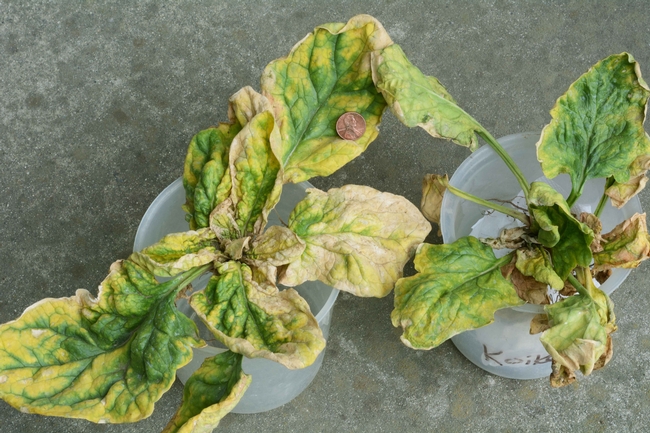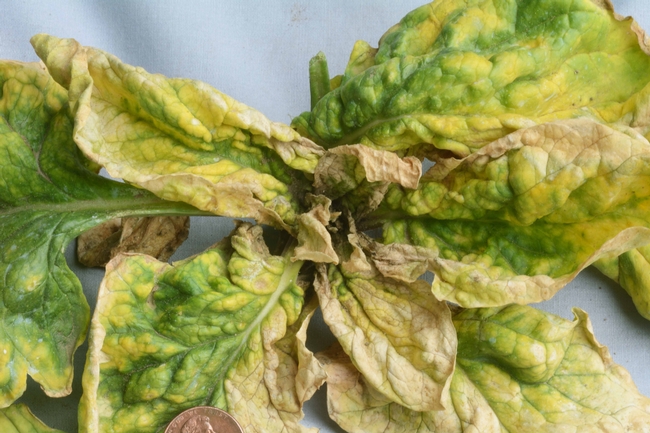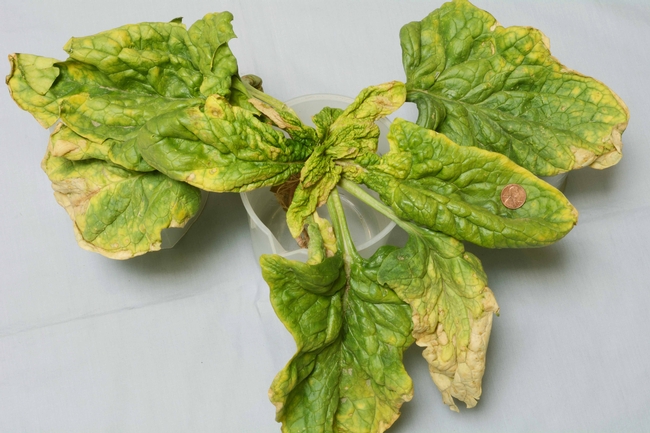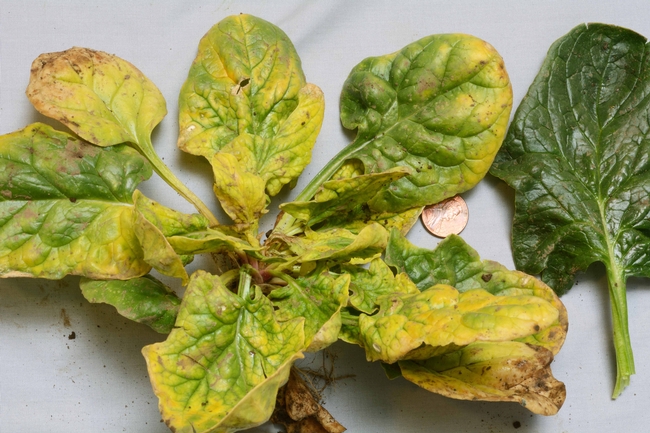Typically, spinach crops in the Salinas Valley and other coastal regions rarely are infected with viruses. However, that changed this spring 2015 due to a number of virus disease outbreaks on coastal spinach. Two viruses, Impatiens necrotic spot virus and Cucumber mosaic virus,have been confirmed in a number of spinach plantings. Symptoms caused by the two viruses are similar and cannot readily be differentiated in the field. All such reports have occurred on the larger, older plantings destined for processing (freezer spinach). To date no virus diseases have been reported yet on baby leaf or other fresh market spinach. This development on spinach is consistent with virus outbreaks on lettuce and other leafy vegetables grown on the coast (see Blog entry for April 9).
1. Impatiens necrotic spot virus (INSV): Diseased spinach plants are severely stunted and short. Leaves are at first yellow and later can become tan to whitish in color. Leaf texture is leathery and the foliage appears crinkled and deformed (Photos 1 and 2 below). Symptoms can be seen on both the older, outer leaves as well as on the newer leaves near the center of the plant growing point. The central growing point of the plant is severely affected. INSV is vectored by thrips.
Photo 1. INSV on spinach
Photo 2. INSV on spinach
2. Cucumber mosaic virus (CMV): On spinach, CMV also causes significant plant stunting, poor growth, and yellow to tan foliage. Leaves are leathery in texture and are crinkled and deformed (Photos 3 and 4 below). Symptoms occur on both the older, outer leaves as well as on the newer leaves near the center of the plant growing point. The central growing point of the plant likewise is severely damaged. CMV is vectored by aphids.
Photo 3. CMV on spinach
Photo 4. CMV on spinach (healthy leaf on right)
The dry spring is contributing to early drying up and senescing of weeds and hillside vegetation; this early decline of surrounding vegetation could be driving thrips and aphid populations into fields earlier than normal. In addition, growers and PCAs reported moderate to high thrips and aphid pressure in the early spring. This abundance of vectors certainly accounts for these early outbreaks of virus disease.
Plants suspected of being infected with viruses can be sent for analysis to the UC Cooperative Extension diagnostic laboratory in Salinas.



